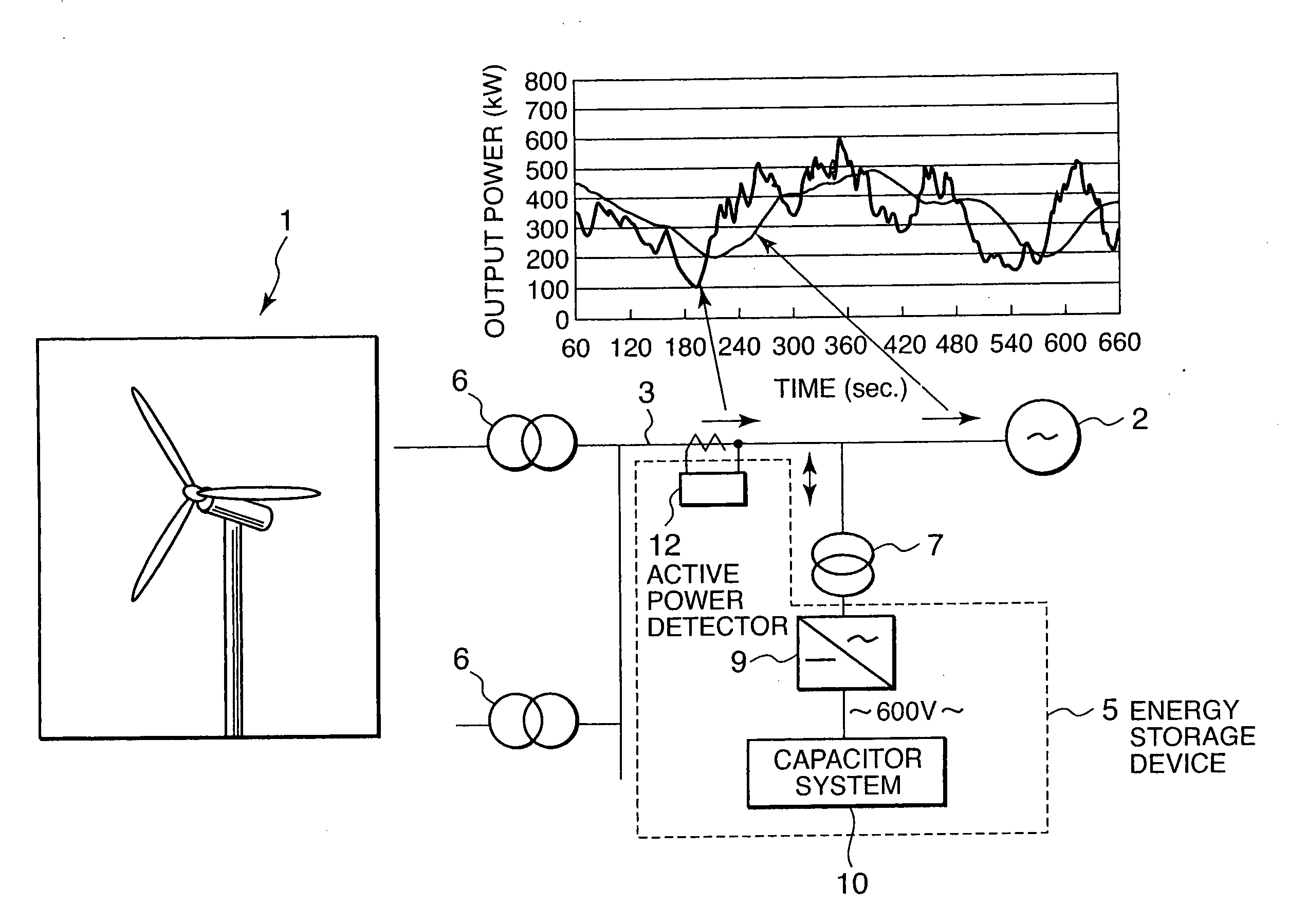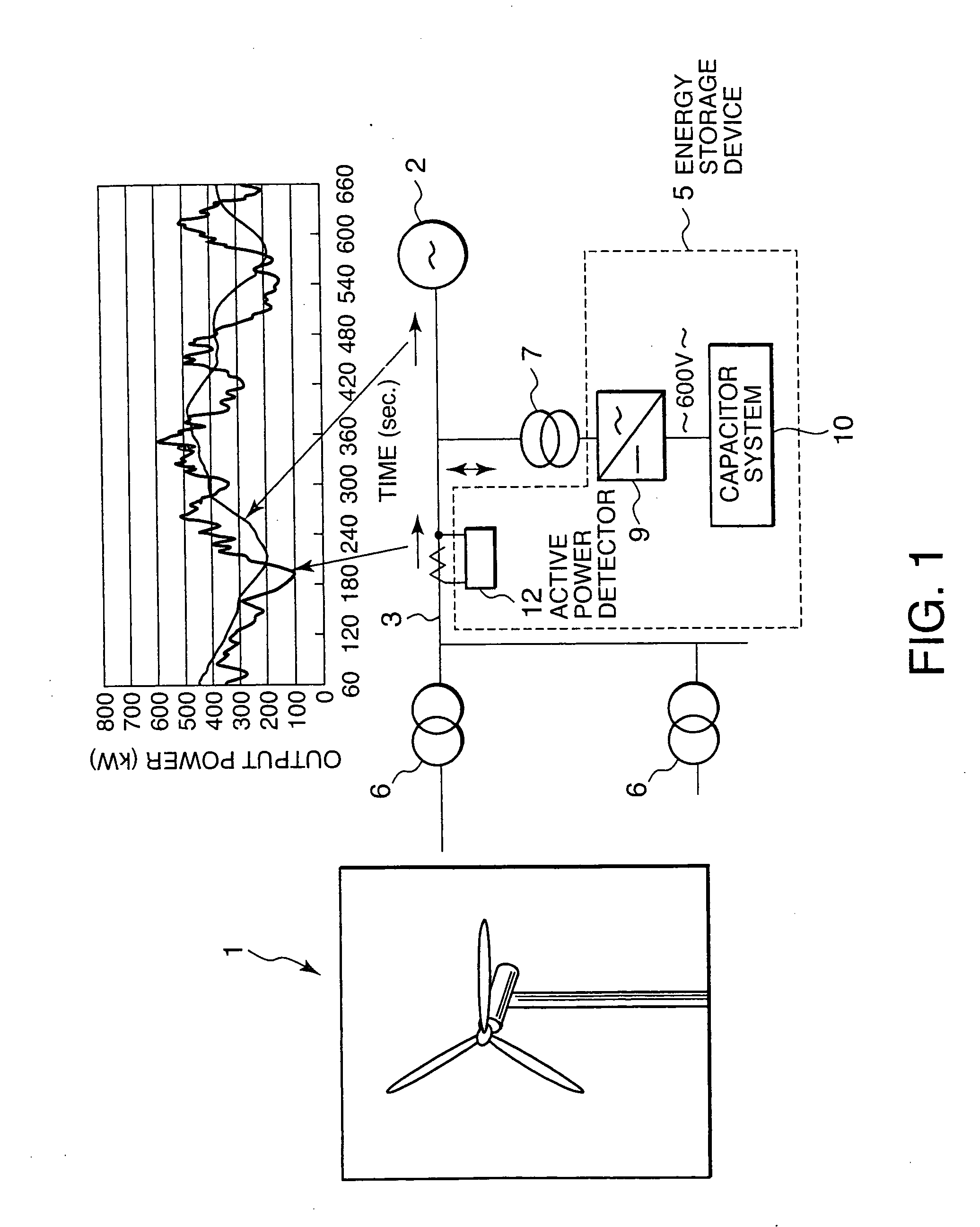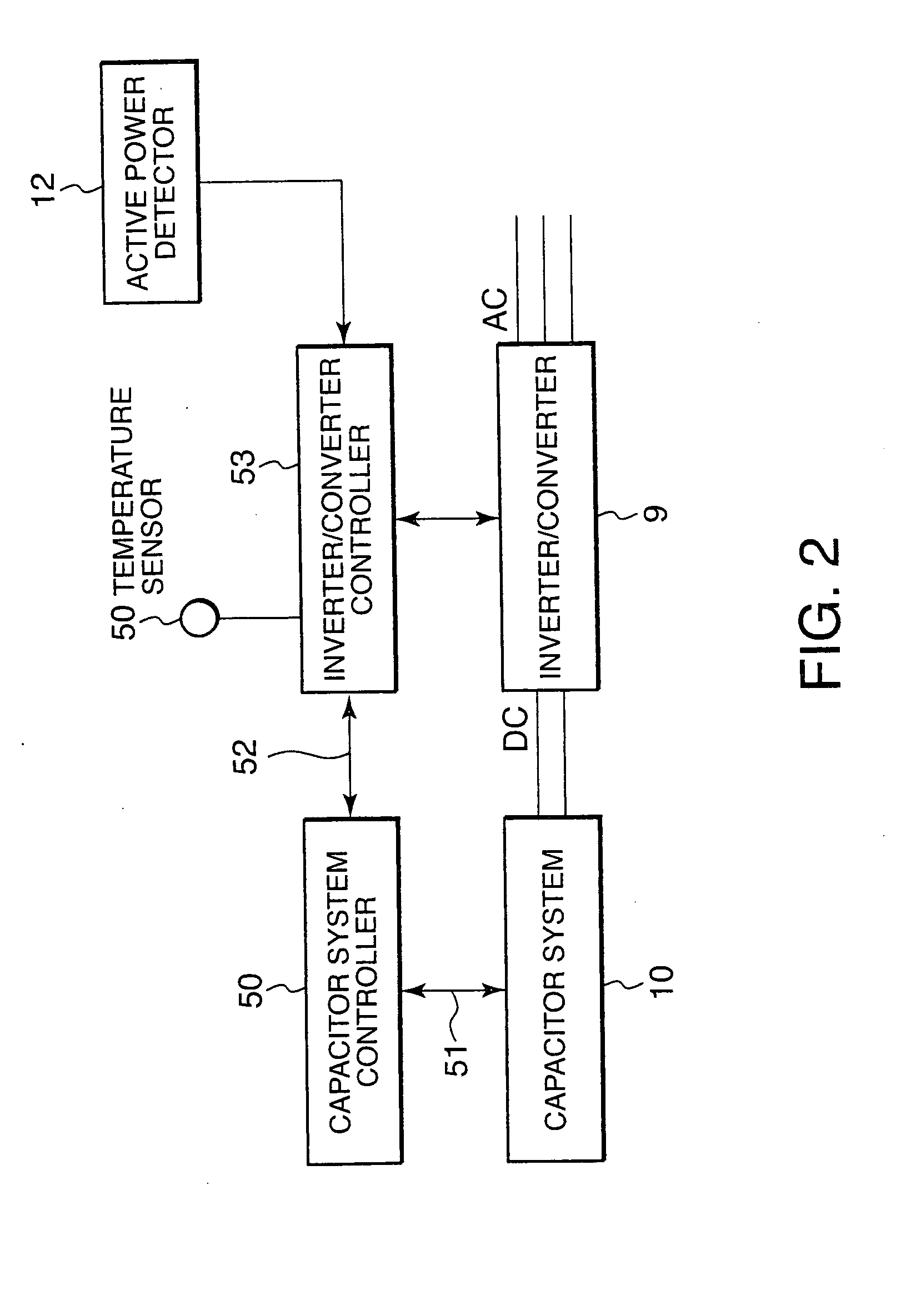Charged/Discharged Power control for a Capacitor Type Energy Storage Device
a power control and capacitor technology, applied in the direction of secondary cell servicing/maintenance, machines/engines, greenhouse gas reduction, etc., can solve the problems of increasing maintenance costs, difficulty in accurately detecting and figuring out the charge level and increasing the cost of the energy storage device. achieve the effect of preventing overcharge and overdischarge of lead batteries, reducing maintenance costs, and increasing the capacity of lead batteries
- Summary
- Abstract
- Description
- Claims
- Application Information
AI Technical Summary
Benefits of technology
Problems solved by technology
Method used
Image
Examples
second embodiment
[0070]Referring to FIGS. 6-8, this invention will be described.
[0071]In this embodiment, the charged / discharged power is controlled with the use of limit values with respect to the temperature of the capacitor system 10 instead of the use of limit values with respect to the SOC. For this purpose, a temperature sensor 54 shown in FIG. 2 for detecting a temperature Tc (° C.) of the capacitor system 10 is connected to the inverter / converter controller 53.
[0072]FIG. 6 shows that the upper limit to the temperature of the capacitor system 10 is T2 (° C.), and a value lower than the upper limit T2 is set as a threshold T1 (° C.) for output power limitation. As in FIG. 3, above a point zero on the axis of ordinate, a state in which the capacitor system 10 is receiving a charge input power, in other words, a charge state is indicated by a positive value, whereas a negative value indicates a state in which the capacitor system 10 is outputting a discharge output power, in other words, a disch...
third embodiment
[0100]Referring to FIGS. 9-11, this invention will be described.
[0101]The first and second embodiments make the energy storage device 5 which has the capacitor system 10 free of maintenance and prolong the lifetime of the energy storage device 5 by executing charge input power limitation control and discharge output power limitation control.
[0102]On the other hand, the power stabilizing performance of the energy storage device 5 can be improved by efficiently utilizing the storage capacity of the capacitor system 10 and thus increasing the charge input power or discharge output power of the capacitor system 10.
[0103]The third embodiment relates to bias control of the energy storage device 5 to raise a mean SOC in order to fully utilize the storage capacity of the capacitor system 10.
first embodiment
[0104]FIG. 9 shows the relation between a running time of the capacitor system 10 and the SOC of the capacitor system 10 without bias control. As shown in the figure, the SOC lowers as the running time becomes longer, and the SOC fluctuates around 20%. A cause of this is a great power loss in charging resulting from a loss in charging the capacitor system 10 and a loss in making an input power to and output power from the inverter / converter 9. When only 20% of the storage capacity of the capacitor system 10 is used as in the case of this example, the SOC frequently reaches its lower limit L2 described in the first embodiment and the probability of the discharge output power being limited becomes accordingly higher. As a result, not enough effect of stabilization control is obtained.
[0105]In this embodiment, a given bias output (kW) is added to or subtracted from a charge input power and a discharge output power that are required for power stabilization so that the SOC of the capacit...
PUM
| Property | Measurement | Unit |
|---|---|---|
| power | aaaaa | aaaaa |
| discharge output power | aaaaa | aaaaa |
| output power | aaaaa | aaaaa |
Abstract
Description
Claims
Application Information
 Login to View More
Login to View More - R&D
- Intellectual Property
- Life Sciences
- Materials
- Tech Scout
- Unparalleled Data Quality
- Higher Quality Content
- 60% Fewer Hallucinations
Browse by: Latest US Patents, China's latest patents, Technical Efficacy Thesaurus, Application Domain, Technology Topic, Popular Technical Reports.
© 2025 PatSnap. All rights reserved.Legal|Privacy policy|Modern Slavery Act Transparency Statement|Sitemap|About US| Contact US: help@patsnap.com



